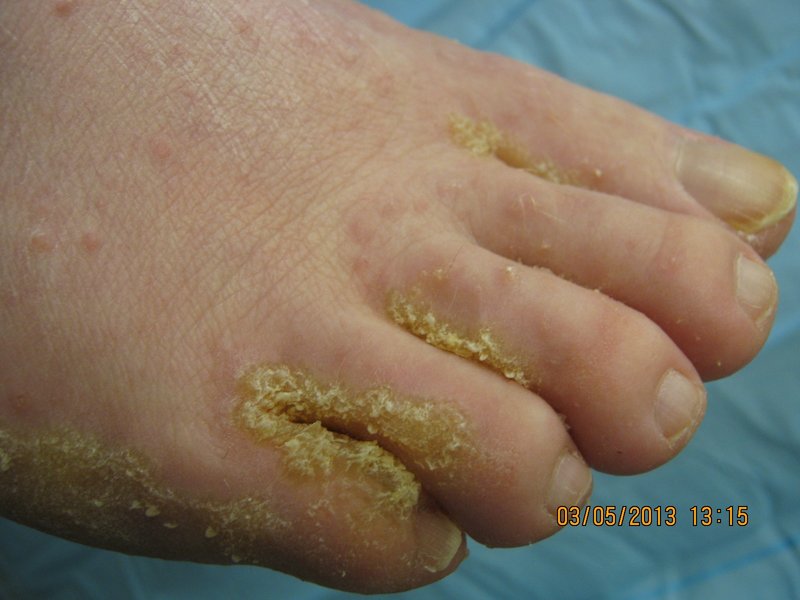
Hyperkeratotic rash in an adult female
Presenter: James Yousif DO, Brandon Yousif
Dermatology Program: MSUCOM/Lakeland Regional Medical Center
CHIEF COMPLAINT: Thickening of the skin on both bottoms of the feet and between the toes
CLINICAL HISTORY: A 50-year-old Caucasian female presented with a ten-year history of thickening of the skin on both bottoms of the feet and between the toes. This eruption was persistent in nature and was associated with significant pain with ambulation and pruritus. A review of systems was also positive for persistent numbness at the base of the digits of her feet. Prior treatment included the use of topical corticosteroid cream for the cutaneous eruption and gabapentin for the associated neuropathy, but both proved ineffective in providing symptomatic relief. Past medical history was positive for type II diabetes mellitus and dyslipidemia. No remarkable dermatologic history was noted, and family history was positive for a paternal grandfather with malignant melanoma.




